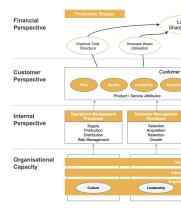How do you make money trading currencies?
Making money trading currencies, also known as forex trading, involves buying one currency while simultaneously selling another currency. The goal is to profit from changes in exchange rates between the two currencies. Here are some strategies and tips to help you make money in currency trading:
Learn the Basics:
- Before you start trading, educate yourself about how the forex market works. Understand currency pairs, exchange rates, and the factors that influence currency movements.
Choose a Reputable Broker:
- Select a reputable and regulated forex broker to ensure a safe and transparent trading environment. Research and compare brokers to find one that suits your needs.
Practice with a Demo Account:
- Most brokers offer demo accounts where you can practice trading with virtual money. Use a demo account to gain experience and develop your trading skills without risking real capital.
Develop a Trading Plan:
- Create a clear and well-defined trading plan that outlines your goals, risk tolerance, and strategies. Your plan should also include entry and exit points for your trades.
Use Technical and Fundamental Analysis:
- Analyze currency pairs using both technical and fundamental analysis. Technical analysis involves studying charts and patterns, while fundamental analysis considers economic and geopolitical events that can impact exchange rates.
Risk Management:
- Implement risk management strategies to protect your capital. This includes setting stop-loss orders to limit potential losses and not risking more than a small percentage of your trading capital on a single trade.
Start Small:
- When you begin trading, start with a small amount of capital that you can afford to lose. As you gain experience and confidence, you can gradually increase your position sizes.
Use Leverage Wisely:
- Leverage can amplify both profits and losses. Be cautious when using leverage, and only use it if you fully understand how it works. Many traders opt for lower leverage to reduce risk.
Keep Emotions in Check:
- Emotions like fear and greed can lead to impulsive decisions. Stick to your trading plan and avoid making emotional trades. Discipline is key.
Stay Informed:
- Stay updated on economic news and events that can impact currency markets. Economic calendars and news sources can help you anticipate market movements.
Trade Liquid Pairs:
- Focus on trading major currency pairs like EUR/USD, GBP/USD, and USD/JPY. These pairs tend to have higher liquidity and narrower spreads, making them more accessible for traders.
Practice Patience:
- Successful forex trading often requires patience. Don't rush into trades; wait for clear signals and opportunities that align with your strategy.
Continuous Learning:
- Forex markets are dynamic, and it's important to keep learning and adapting. Consider reading books, taking courses, and staying informed about evolving market trends.
Keep Records:
- Maintain a trading journal to record your trades, including entry and exit points, reasons for the trade, and results. Analyzing your past trades can help you improve your strategy.
Consider Automated Trading:
- Automated trading systems, or forex robots, can execute trades on your behalf based on predefined criteria. However, be cautious and thoroughly test any automated system before using it with real money.
Making money in currency trading is challenging and comes with risks. It's important to approach forex trading with a well-thought-out plan, risk management strategies, and a commitment to continuous learning. Many traders incur losses, so it's essential to only trade with money you can afford to lose. Consider seeking advice from experienced traders or financial professionals to enhance your forex trading skills and increase your chances of success.
Currency trading, also known as forex trading, is the buying and selling of currencies on the foreign exchange market. The goal of currency trading is to make a profit by buying currencies when they are undervalued and selling them when they are overvalued.
There are a number of different strategies that currency traders can use to make money. Some of the most common strategies include:
- Day trading: Day traders buy and sell currencies on the same day in an attempt to make a small profit on each trade. Day trading is a very risky strategy, and it is not suitable for most traders.
- Swing trading: Swing traders hold currencies for a few days or weeks in an attempt to profit from short-term price movements. Swing trading is less risky than day trading, but it still requires a lot of knowledge and skill.
- Position trading: Position traders hold currencies for months or even years in an attempt to profit from long-term price movements. Position trading is the least risky strategy, but it requires a lot of patience and discipline.
Here are some tips for currency traders who want to make money:
- Do your research. Before you start trading currencies, it is important to do your research and understand the market. You should learn about the different currencies, the factors that affect their prices, and the risks involved in currency trading.
- Use a demo account. Once you have a good understanding of the market, you should practice trading with a demo account. This will allow you to test your strategies and learn to manage your risk without risking any real money.
- Start small. Once you are comfortable trading with a demo account, you can start trading with real money. However, it is important to start small and gradually increase your risk as you gain more experience.
- Use a stop-loss order. A stop-loss order is a type of order that will automatically sell your currency when it reaches a certain price. This can help to limit your losses if the market moves against you.
- Be patient. Currency trading is a long-term game. It takes time and experience to become a successful currency trader. Don't expect to get rich quick.
Key Insights and Approaches
Here are some key insights and approaches to currency trading for profit:
- Understand the fundamental and technical factors that drive currency prices. Fundamental factors include economic data, such as GDP growth, inflation, and interest rates. Technical factors include price charts and indicators.
- Develop a trading strategy that fits your personality and risk tolerance. There is no one-size-fits-all trading strategy. Some traders prefer to trade day-to-day, while others prefer to take a longer-term approach.
- Use risk management techniques to protect your profits and limit your losses. This includes using stop-loss orders and position sizing rules.
- Be disciplined and stick to your trading plan. It is important to avoid making emotional trading decisions.
Currency trading can be a profitable venture, but it is important to remember that it is also a risky one. Do your research, start small, and be patient before you start trading currencies for profit.













